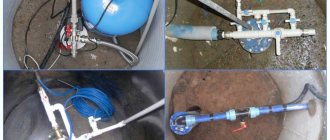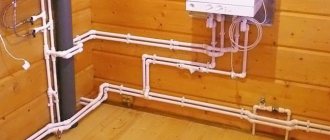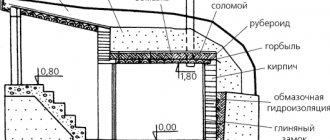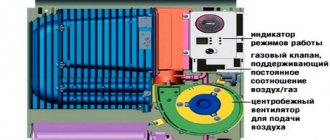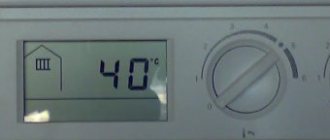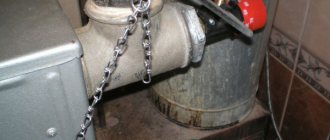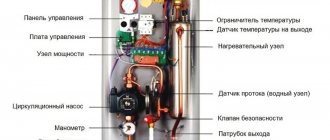Draining a heating riser in a private house
In a properly installed system, there is a drain valve located at the lowest point of the system. It is usually located on the return pipe near the boiler. A hose is connected to the drain tap, through which water is removed from the circuit. After the water has been completely removed, you can begin to realize the purpose for which the coolant was drained.
Let's assume that all the recommendations have been followed, the battery is disconnected from the system by shut-off valves on it, but how to drain the water from the heating battery if there is a very significant amount of water in it, especially if the battery is cast iron. Therefore, it is necessary to install a container of sufficient volume to collect leaking water when disconnecting the radiator from the circuit.
For example, it is impossible to replace a radiator in a room without first draining the liquids. In addition, it is necessary to remove liquid from the pipes when leaks occur, the system is contaminated, and, if necessary, replace the coolant with a new one.
If there is neither a plug nor a tap, then disconnect the heating battery and drain the coolant. This will turn out to be more difficult and dirtier, but there is no other way. It is necessary to drain water from the system in a private house if the owners are absent for a long time. During this period, no one monitors the boiler, and the coolant does not heat up. The liquid in the pipes cools, freezes, expands and can rupture them. If the house has heated floors that are heated with water, then if they are damaged, repaired, or the owners leave, the water must be drained.
How to properly remove water from heating radiators?
Removing water from the heating system, what's so difficult about it? Connect the drain hose, open the tap and pour out the water. Meanwhile, an incorrect operation to drain water from the circuit is fraught with unpleasant results. In independent systems, water drainage usually does not cause difficulties, unlike the contours of high-rise buildings? After all, mistakes due to ignorance of simple rules lead to the creation of unpleasant circumstances. For example, you can flood the neighbors below with water.
When and why does water drain?
For any intervention in the heating circuit, which is associated with changing its components, a water drain from the heating system is needed, because it is impossible to carry out work on a system filled with water.
The key list of work that requires removing the coolant from pipes and batteries is as follows:
- replacement of heating devices;
- removal of leaks;
- preventive measures, removal of contamination;
- replacement of coolant.
Draining the coolant from an independent system
The process of removing water from the pipes and batteries of an independent heating system for a personal home does not require any permission or approval. What needs to be done next and how to remove water from the heating system is described below.
The following simple rules must be followed:
- turn off the boiler (of various types) and allow the coolant to cool;
- close the cold water supply valve;
- open the air valves (for a closed system).
A well-installed system has a drain tap, which is located at the lowest point of the system. In most cases it is located on the return pipeline near the boiler. A hose is connected to the water drain tap, through which water is removed from the circuit. After the water has been completely removed, you can begin to realize the purpose for which the coolant was drained. If heated floors are installed, then water can be removed from the pipes only by connecting an air blower to the inlet section of the pipe to displace it with air pressure.
But very often situations arise that do not require a complete drain of water. For example, replacing or repairing an individual battery. The answer to the question - how to remove water from heating radiators - is simple if the design of the system has been carefully thought out and installed. In order for this operation to take place without problems and easily, even during the design of the circuit it is necessary to provide for the possibility of cutting off the heating device from the system, without disrupting its operation.
Let's assume that all the tips have been followed, the battery is disconnected from the system by the shut-off valves on it, but how to remove water from the heating batteries if there is a very large amount of water in it, especially if the battery is cast iron. Therefore, it is necessary to install a container of sufficient volume to collect leaking water when disconnecting the heating device from the circuit. If the homeowner does not have the necessary skills, or it is not clear to him how to remove water from the heating system, then it is better to invite a heating supply specialist.
Water drainage from heating systems of high-rise buildings
If the apartment is located in a high-rise building, then such an operation is complicated by certain issues. When performing repair or modernization work on the heating system, water drainage from the riser is required. To do this, you need to agree with the company that operates home heating. Every resident must know where to go regarding heat supply if problems arise. The water drainage service is not free, but during the heating season it is extremely costly and hourly. Due to this, it is better to schedule work in the summer, when the coolant is drained, but permission to carry out the work and shut off the riser must be obtained.
Replacing a heating device in a house with several apartments
If you only need to replace a heating device for repair work, then any apartment owner must know how to properly close the heating battery. If the system in the house was installed honestly, then such an opportunity always exists.
Having closed the shut-off valves at the battery inlet, which ends the water supply to the heating device, but does not end the movement of water along a closed circuit in the heating system, we proceed to replacing the battery. Future actions depend on the availability of the outlet valve. If it is present, then the water is drained through the tap, but more often it is missing, so the drain is performed when the inlet or outlet pipe is disconnected. You should place a container for water so as not to flood your neighbors.
You should also know how to close a heating battery to eliminate a variety of emergency situations, for example, a serious leak due to the destruction of a heating device. It is important for every owner to know the telephone number of the organization where to contact regarding heat supply immediately when a dangerous situation arises.
If the Leningradka scheme is used, then a circular pump should be installed first. Any apartment owner must have a clear and precise understanding of how to close the heating radiator in this case.
With a similar circuit diagram, the following actions are carried out:
- the bypass valve opens completely;
- The shut-off valves on the battery are closed on both sides.
Having completed these operations, we begin to remove the heating device from the system.
After replacing the battery, sealing the connections and tightening the additional nuts, the valves at the inlet and outlet of the battery are gradually opened.
This opens the air vent and closes the circulation pump. Slowly filling the battery prevents water hammer, and air from the battery is released through the air vent before water appears. This means that the battery is filled with liquid, the air has been removed, and the shut-off valves on the battery can be opened completely.
Certain difficulties in heating supply that do not require water drainage
Very often, heat supply problems are associated with the fact that water does not flow in the heating system, for a variety of reasons.
There are many reasons and the most popular are:
- presence of air in the heating circuit;
- system clogging;
- excessively small diameter of pipelines;
- the power of the circulation pump is insufficient;
- in complex systems there are no check valves;
- violation during installation of the system.
Many violations in heating systems are interconnected, for example, water babbling in heating pipes. This phenomenon can cause discomfort and complaints - heating radiators in the house make noise. Each person perceives the sounds that a heating system can produce differently. Someone is sure that the heating supply is murmuring, while others perceive these sounds as humming. Unpleasant sounds also include knocking on heating radiators during the operating period of the system.
Noises in heating circuits are phenomena of the same order and there are many reasons that cause them:
- the presence of air in the system, it needs to be removed;
- constant air leaks due to poor sealing of connections;
- the speed of the coolant is prohibitively high;
- breakdown of the expansion tank (closed system);
- estrus in the system;
- incorrect connection of the thermal valve;
- errors in the project or when installing the circuit.
The reasons listed are the most popular. Under any circumstances, if various unpleasant noises arise in the heating system that were not there before, it is necessary to carefully examine and check the operation of the circuit. After establishing the location of the breakdown, it must be removed. However, if you can’t find and remove the damage on your own, then you need to turn to professionals.
Design features of the heating system drain
It is better to plan heating system repair work for the end of spring - summer - beginning of autumn, since during the heating period it is possible to drain the liquid only for a few hours and at a high cost.
Heated floors are a complex complex of a wide variety of equipment, the failure of one of the elements of which can lead to failure of the entire heating system.
Procedure for draining the heating riser:
- close valve 1 in the attic;
- find valve 2 in the basement and turn it off too;
- remove plug 3 and drain the coolant.
To do this, ball shut-off valves are installed at the inlet and outlet of radiators. A spare pipe - bypass - is installed. Taps allow you to shut off the coolant supply.
If you only need to change the radiator for repairs, then every apartment owner must know how to properly shut off the radiator. If the system in the house was installed in good faith, then this possibility certainly exists.
It is more difficult to properly drain water from the pipes and batteries of an autonomous system if a “warm floor” is installed in the house. In this case, to remove the coolant, you will have to connect a compressor to the inlet pipe of the network, which will help displace water from the pipes using air pressure. Although it is not always necessary to completely drain the water from the system.
The second picture also shows a system with bottom feed. Only the supply and return risers are located in different rooms. Therefore, taps 1 and 2 can be spaced apart. And the procedure for draining the coolant is the same.
The service of draining water from the riser is paid, it is performed by employees of the responsible company, its cost depends on the time of repair. The most expensive drainage is in the winter during the heating season, and the cheapest in the summer. Therefore, you should plan in advance for the modernization and maintenance of heating elements.
Draining the coolant from the heating riser
A properly functioning heating system is an essential part of comfortable living in an apartment or house. Sometimes there is a need to change heating devices, fix leaks in the network, move or move the riser closer to the wall.
Each operation in the system requires draining of the coolant. And this is not at all surprising. After all, it is impossible to open pipes when the network is full. Due to this, at the beginning of repair and preventative measures, it is necessary to drain the heating riser.
Who should do this?
The management company is responsible for the serviceability of communication networks in apartment buildings. The drainage of the heating riser must be approved by them. And very often - invite their own professionals. Hence the questions and ambiguities:
1. Can I choose my own date?
Almost impossible. The management company itself determines the day and time. You can ask to remove water from the system at specific periods of time only through great connections.
2. At whose expense is the heating riser drained?
Exclusively at the expense of the tenants. They will ask for cash both for the approval procedure and for the participation of professionals. Tariffs in different regions and in different companies differ sharply. It is impossible to predict the amount. In one town they will ask for a thousand, and in another - five. The price includes turning off the system, draining the coolant and further filling the network.
If repairs need to be done at the height of the heating season, then you will need to convince the management company of the dire need and pay several times more. If it’s below thirty degrees outside, no one will turn anything off. The only exceptions will be in dangerous situations.
Is it possible to do without draining the riser?
Minor repairs or simply replacing the battery do not require draining the entire heating system. In fact, in all apartments it is possible to close a separate heating device without affecting the general circuit.
1. Turn a suitable tap on the heating riser and close the coolant supply.
2. Open the outlet valve on the radiator or unscrew the plug using a spanner. Remove the water into a container.
If there is neither a plug nor a tap, then disconnect the heating battery and drain the coolant. It will be more difficult and dirtier this way, but there is no other way.
Sometimes, for minor repairs, you don’t need to drain the water, but simply close the supply to the internal circuit.
Draining the heating riser in a private home
The owner of a personal home can drain the coolant on his own at any convenient time. First of all, he needs to find the taps that shut off the riser.
There are several types of heating systems. There are a lot of them, but they are similar in functionality. The main thing is to get the essence:
- find the necessary shut-off valves;
- close the network;
- drain the coolant.
Let's look at the example of individual schemes.
The first picture shows a heating system with bottom supply. In it, the supply and return pipes are located in the basement or first floor. The coolant is supplied from below, goes through the “idle” riser to the floor above and goes back through the radiators back along another riser. If the house has such a heating system, then 2 pipes placed next to each other are noticeable in the rooms.
How to drain the heating riser?
1. Close the valves on the supply riser (1) and return riser (2).
2. Open the drain valves (3) and drain the coolant.
Closed valves 1 and 2 should not let water through. They may only drip a little.
The second picture also shows a system with bottom feed. Only the supply and return risers go in different residential areas. Thanks to this, taps 1 and 2 can be separated from each other. And the procedure for draining the coolant is the same.
The third picture shows a system with a top supply of coolant. The supply line is located in the attic or under the ceiling surface of the upper floor.
The procedure for draining the heating riser:
- close valve 1 in the attic;
- find valve 2 in the basement and close it too;
- remove plug 3 and drain the coolant.
Similar systems have been created in high-rise buildings.
Some heating problems that do not require draining
The design of the heating system in an apartment building is of two types: two-pipe and single-pipe. The single-pipe system has the main disadvantage of cooling the water on its way to the upper floors. Heat is directed from the bottom up under pressure, bypasses all thermal circuits and flows back through the same pipe.
A water circuit filled with antifreeze does not suffer from this problem. In this case, the coolant is replaced every 3-5 years - provided that the boiler is operated without overheating (for heated floors, the maximum permissible heating temperature threshold for the coolant is 45-550C).
The Resolution does not give a clear indication of the frequency of their conduct, but makes a footnote to the order of the State Construction Committee. Timing procedures must adhere to the legislation of the country, but flushing can be carried out by decision of a meeting of apartment owners.
In seasonal housing, failure to drain water from the heating circuit of underfloor heating before frost sets in can result in the system defrosting, so using antifreeze as a coolant is undoubtedly preferable - in addition to being resistant to low temperatures, these liquids are less subject to wear on pump parts.
The contractor fulfills the conditions according to the agreed schedule, after which the acts are drawn up. The first is a legal entity that provides economic services to a multi-storey building. Before the end of winter, the housing office must draw up a list of preventative and repair work, including cleaning heat consumption units.
The simplest way to organize the drainage of a water supply system in a country house is well known - to use drain taps. A tee is placed on the pipe through which water is supplied from a well or well, and a drain valve is connected to the tee. A drain valve is also installed at the lowest point of the wiring. Ideally, each branch of water pipes in the house should have a drain valve.
There are several types of heating systems. There are quite a lot of them, but their operating principles are similar. It is important to get the point:
- find the necessary shut-off valves;
- shut down the network;
- drain the coolant.
After replacing the battery, sealing the connections and tightening the locknuts, gradually open the valves at the battery inlet and outlet.
Almost impossible. The management company itself determines the day and time. You can ask to drain the water from the system within a certain time frame only through great connections.
When faced with repair work, going on a long trip or becoming a victim of an emergency, many people wonder whether it is necessary to drain the water from the heating system? In most cases, the answer is positive, although there are also situations where it is possible to fix a problem or make repairs with radiators filled with liquid.
How to drain water from heating radiators in an apartment: why is this necessary?
Today, emergency situations often arise that force you to do unusual things, and thanks to this, the question of how to properly drain water from heating radiators is asked very often by people who are not considered professionals in this profile.
Read more about how the process works in the publication.
Drain water from the battery correctly
If the battery is insufficiently heated in winter, when replacing or when pipes break due to a temperature jump, it becomes necessary to remove water from the battery. Almost all the time you need to do this on your own.
How to properly remove water from a battery? You just need to consider certain process factors and follow the advice of professionals.
First of all, it is necessary to keep in mind that the water drain in a house with several apartments is made from a section of the network, and in private houses the entire system is drained.
Water drain in the apartment
Water drainage in an apartment should be done as follows:
- close the distribution valve that extends from the riser;
- it all depends on the type of reinforcement; do some actions.
If there is an air vent, you need to unscrew the key with a plastic handle or use a slotted screwdriver.
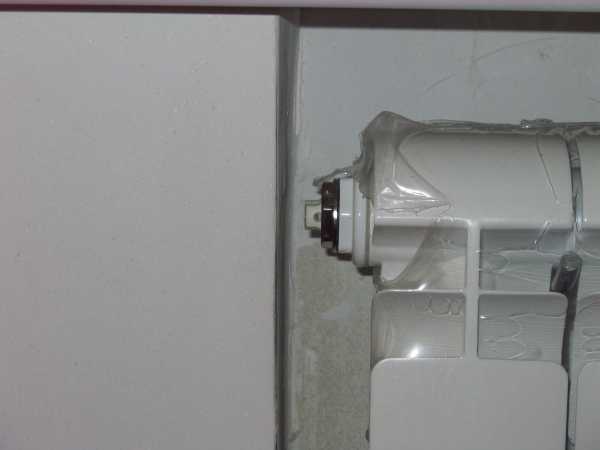
There is a side hole on the battery drain valve that sometimes faces the wall. It must be closed, otherwise unclean water from the battery system may flood the wall.
Next, you need to place a container under the hole and unscrew the screw until a distinctive sound appears - the hissing should soon disappear.
After this, you need to turn the screw out a little until water flows out of the hole.
Why is this being done? So that part of the air mixed with the heat carrier comes out during the process. When the stream becomes stable, you need to screw in the system valve.
To monitor the correctness of the above actions, it would be a good idea to make sure that the previously cool part of the battery has warmed up. If this does not happen, then you need to remove the water again.
If you have a regular tap, you need to connect a long hose to the valve, which should be enough to reach the sewer.
Then you need to open the battery valve completely to create a strong flow in the middle.
As the water speed increases, the air comes out faster, but it is better to take into account the network pressure and the power of the air plug.
It is necessary to control the draining process until the cold parts of the battery begin to warm up. In most cases this is a very long time.
In the absence of fittings, it would be a good idea to seek the help of professionals, especially if you are draining water from a system of cast iron Soviet batteries.
If there is a cast iron radiator in the apartment, then you need to unscrew the nut and make sure that after screwing it in, the gasket does not leak.
Water drain in a private home
For modern sectional batteries, you need to smoothly unscrew the top plug 1-2 turns.
Draining home water should be done as follows:
- turn off the boiler from the electricity supply;
- close the tap through which water flows to the boiler;
- do the above steps, it all depends on the type of reinforcement.
Be sure to drain water from all devices to which it is connected. You should not forget about water locks - these are curved sections of drain pipes under different types of plumbing fixtures.
Water can also remain in system cleaning filters, a variety of home appliances (dishwashers and washing machines), including electric water heaters.
Due to this, free access to them must be guaranteed for the draining process. The temperature should be around +5° C.
Basically, the process of draining water from radiators in an apartment and a privatized house does not present any particular difficulty.
You can actually do the procedure yourself, but if you don’t have an air vent, you should still turn to professionals, otherwise it could end up flooding your neighbors with water, leaving your home without heat supply for a long time, and filing a lawsuit.
System frost protection
There are different options for emergency heating systems for houses. They are based on the fact that if the owners of the house are away for a long time, the heating system is controlled electronically.
This is a meter that is mounted in the room and reads the temperature, and a receiver that communicates directly with the boiler. The main condition for such automation is the need for continuous access to the Internet.
An additional option for saving from freezing is the use of antifreeze.
But if the system consists of zinc pipes, then this liquid cannot be used in the process.
By interacting with zinc, antifreeze loses its properties. Also, it has a heat capacity less than that near water, therefore, it requires the installation of a more powerful heating device and circulation pump.
To prevent freezing of residual water, it is best to use faucets with ceramic elements and taps with rubber seals in the system.
Moreover, it is better to use low pressure polyethylene pipes (LDPE). They have better performance characteristics, and when water freezes in the pipe, absolute tightness is maintained. In this case, no damage to the pipe itself occurs.
It is necessary to say a few words about the safety of the external water supply system. A well-selected depth of non-freezing of the soil is the main condition for laying a water metering unit.
The required slope of the pipes helps the free return flow of water.
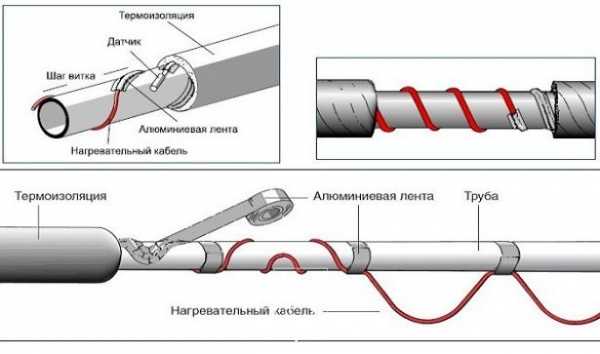
If the pipes go outside, then a heating wire is needed, which makes it possible to maintain the required temperature in the system and protects the pipes from condensation.
It must be turned on at a temperature of -5° C and the heating must be adjusted. If the temperature outside has dropped below the specified level, and you are too late to turn it on, then you will need to wait until the ice that appears has melted.
Proper protection of the heating supply from freezing and proper care of it will help ensure that the system will serve you for a long time.
However, it must be said that the overall process of plumbing work requires time and attention and is needed to prevent dangerous situations from arising.
Therefore, if you still have questions about how to properly drain water from heating radiators, it is better to ask professionals.
Video: subtleties of filling a closed system
In multi-storey buildings, the main structural elements are the supply and return risers, the internal piping system, shut-off valves, drain valves and the radiators themselves. In this regard, draining water from the heating system will be slightly different for both systems, although the operating principle is the same.
In modern summer cottages, many people install a pipeline system. The pipeline can be connected:
- to the central water supply,
- to an autonomous water supply system.
Draining coolant from a heating system located in an apartment building is much more difficult. If you need to remove water from a communication in order to modernize it, you will have to empty the entire riser pipe running through all apartments located in the same vertical from the coolant. Such repairs require prior approval from the company that services the heat supply of the apartment building.
However, the idyll cannot continue indefinitely - any technology is not eternal and needs repair over time. Heated floors are a complex complex of a wide variety of equipment, the failure of one of the elements of which can lead to failure of the entire heating system.
A common reason for the need to drain the coolant is the preservation of the heating system for the winter when using ordinary water in the circuit. Before the onset of cold weather, this event is mainly carried out at dachas and country houses that are not used in winter. To simplify and speed up the draining process, special equipment is used.
Draining the heating system is necessary in the following cases:
- when it is necessary to eliminate leaks in pipes;
- if old radiators are replaced with more modern models;
- when preventive measures are taken to clean the system of accumulated contaminants;
- if you need to replace the coolant.
Before the onset of cold weather, this event is mainly carried out at dachas and country houses that are not used in winter.
Resolution of the Russian Federal Construction Authority No. 170 (current version 2020) covers issues of proper operation of the heating structure. The regulations indicate a summer inspection of shut-off valves, flushing of building blocks, and elimination of permanent and temporary blockages.
1. Is draining and filling the heating system in housing and communal services a paid service?
With the advent of the first cold weather, many owners of private houses and summer cottages have a need to drain water from the pipes of their plumbing and heating systems. Many people think about how to drain water from pipes with their own hands, they think that it is very difficult, and the help of specialists is needed. In fact, you can do this on your own.
But if it happens that instead of antifreeze, water is used as a coolant, then how to properly drain this water from the heating system? Turn off the boiler or close the distribution valve on the pipe leading from the riser. Close the valve through which water is supplied to the heating system.
How to properly drain water from the heating system in a house or apartment? It is necessary to take into account the design features of the heating system and follow the procedure. The tap and tee must have a hose attachment to the check valve on the incoming water heating pipe. Another tee with a tap must be installed on the outlet pipe from the heater to supply air when draining water.
Procedure for draining water from the system
Warm floors are a closed system, so it is necessary to take care of the drain taps at the installation stage. The number of valves must correspond to the number of water circuits.
A heated floor is actually a long hose laid into the floor. Installation method - the configuration of the circuits may be different, but the principle of operation of the water circuit is the same - the coolant transfers heat to the surrounding space by heating the floor surface.
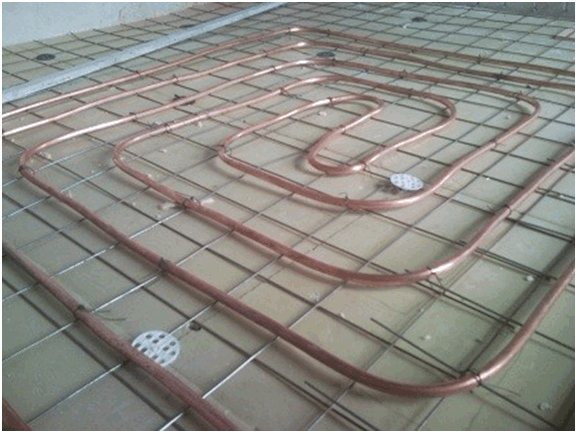
Image of the outline of a copper pipe underfloor heating system laid on reinforcing mesh in front of the screed device
Before starting the operation to drain the coolant, the heating system is turned off, after which the time necessary for all its elements to cool completely is waited.
Considering the fact that the water circuit is connected to the main pipeline, and the connection point is located above the floor level, the water is drained forcibly using an air compressor.
Note: the power of a household vacuum cleaner is not enough to empty a heated floor system.
Important! To purge the water circuit, a compressor with an operating pressure of up to 5 bar is used - using a more powerful unit risks destroying the heat pipes.
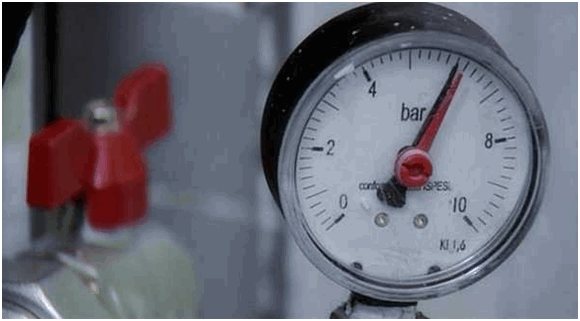
The pressure gauge needle is at 6 bar - the maximum permissible blowing pressure of the underfloor heating system has been exceeded!
The drainage is carried out through a return line equipped with a drain valve, and the compressor is connected to the manifold on the inlet pipe, so the check valve may create some interference when purging the pipe. After connecting to the manifold, the compressor is turned on to displace the coolant from the circuit, and the air supply pressure is gradually increased - to a value after which liquid begins to flow out at the outlet. It should be remembered that the volume of water in each of the heated floor circuits is insignificant, so an ordinary bucket with a volume of 8-10 liters is sufficient to receive it.
The compressor should operate until air begins to flow continuously from the pipe following the water.
Note: if you do not have a compressor at hand, there is another way to empty the system of water and avoid defrosting the heating system. A hose of suitable diameter 1 m long with a funnel at the end is tightly placed at the inlet of the heat pipe. The end with the funnel is raised higher and liquid for washing car windows is gradually poured into it - “anti-freeze” (it is better to use a brightly colored one). As it is displaced, water will flow out of the return pipe, and then technical fluid - a lengthy but effective process.
Pressure test
Flushing and pressure testing of heating systems is regulated by regulations and is included in the register of mandatory operations for the operation of heating structures. The regulation is enshrined in current legal acts on the filing of appeals and complaints in the event of failure of management organizations to fulfill their duties.
For any intervention in the heating circuit, which is associated with the replacement of its elements, it is necessary to drain the water from the heating system, because it is impossible to carry out work on a system filled with water.
After draining, care must be taken to ensure air access into the cavity of the structure. To do this, it is necessary to open the so-called Mayevsky valve, which is usually located at the highest point of the autonomous system.
Water drainage from heating systems
The heating system sometimes requires a variety of preventative or repair work. From the point of view of the average inhabitant of our homeland, the most important type of such work is the replacement of heating radiators or the removal of leaks that are associated with them.
In fact, all more or less serious work in the heating system requires draining the coolant. Which is quite reasonable, because you will be opening the pipes, and this is highly discouraged when the system is full.
So, before starting any work on the heating system, you need to drain the riser and release the water from the system.
Moreover, this is correct not only for winter - even in summer, water remains in the heating system. And this is where difficulties arise before us: draining the heating riser can only be done in agreement with the management company (MC) and exclusively by the hands of its professionals. Although, the latter is not at all necessary.
How to flush cast iron radiators ms140
A properly functioning heating system is an essential component of comfortable living in a house or apartment. Occasionally there is a need to replace radiators, fix leaks in the network, move or move the riser closer to the wall.
The drain valve is located between the check valve and the accumulator. During the process of draining water, all taps at water collection points must be open. If there is a storage tank in the house, drain the water from it. Don’t forget about the summer water supply located outside - it will suffer from frost before anyone else. If drain taps are not installed, a tee must be installed. A car compressor is connected to it.
